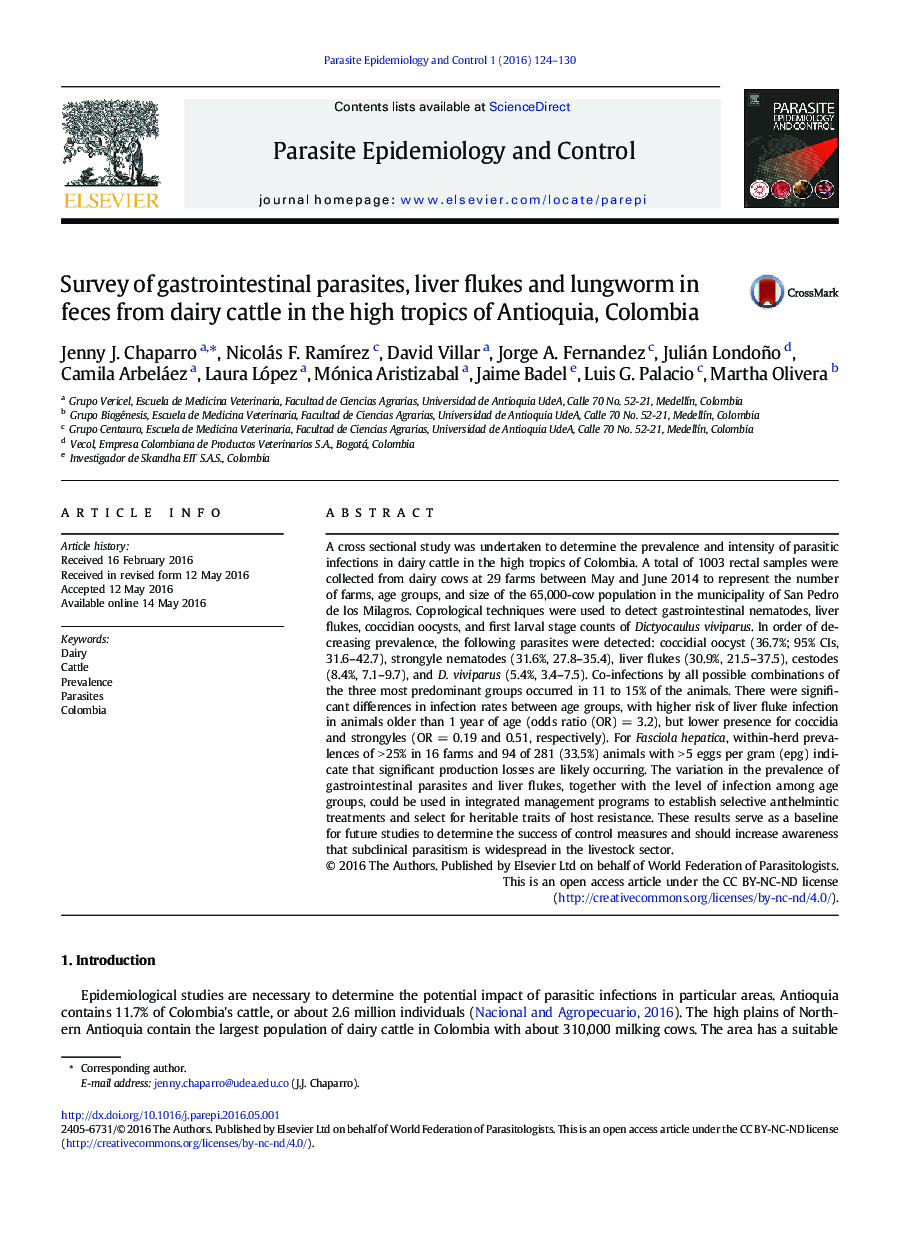| کد مقاله | کد نشریه | سال انتشار | مقاله انگلیسی | نسخه تمام متن |
|---|---|---|---|---|
| 2473677 | 1113044 | 2016 | 7 صفحه PDF | دانلود رایگان |
A cross sectional study was undertaken to determine the prevalence and intensity of parasitic infections in dairy cattle in the high tropics of Colombia. A total of 1003 rectal samples were collected from dairy cows at 29 farms between May and June 2014 to represent the number of farms, age groups, and size of the 65,000-cow population in the municipality of San Pedro de los Milagros. Coprological techniques were used to detect gastrointestinal nematodes, liver flukes, coccidian oocysts, and first larval stage counts of Dictyocaulus viviparus. In order of decreasing prevalence, the following parasites were detected: coccidial oocyst (36.7%; 95% CIs, 31.6–42.7), strongyle nematodes (31.6%, 27.8–35.4), liver flukes (30.9%, 21.5–37.5), cestodes (8.4%, 7.1–9.7), and D. viviparus (5.4%, 3.4–7.5). Co-infections by all possible combinations of the three most predominant groups occurred in 11 to 15% of the animals. There were significant differences in infection rates between age groups, with higher risk of liver fluke infection in animals older than 1 year of age (odds ratio (OR) = 3.2), but lower presence for coccidia and strongyles (OR = 0.19 and 0.51, respectively). For Fasciola hepatica, within-herd prevalences of > 25% in 16 farms and 94 of 281 (33.5%) animals with > 5 eggs per gram (epg) indicate that significant production losses are likely occurring. The variation in the prevalence of gastrointestinal parasites and liver flukes, together with the level of infection among age groups, could be used in integrated management programs to establish selective anthelmintic treatments and select for heritable traits of host resistance. These results serve as a baseline for future studies to determine the success of control measures and should increase awareness that subclinical parasitism is widespread in the livestock sector.
Figure optionsDownload as PowerPoint slide
Journal: Parasite Epidemiology and Control - Volume 1, Issue 2, June 2016, Pages 124–130
